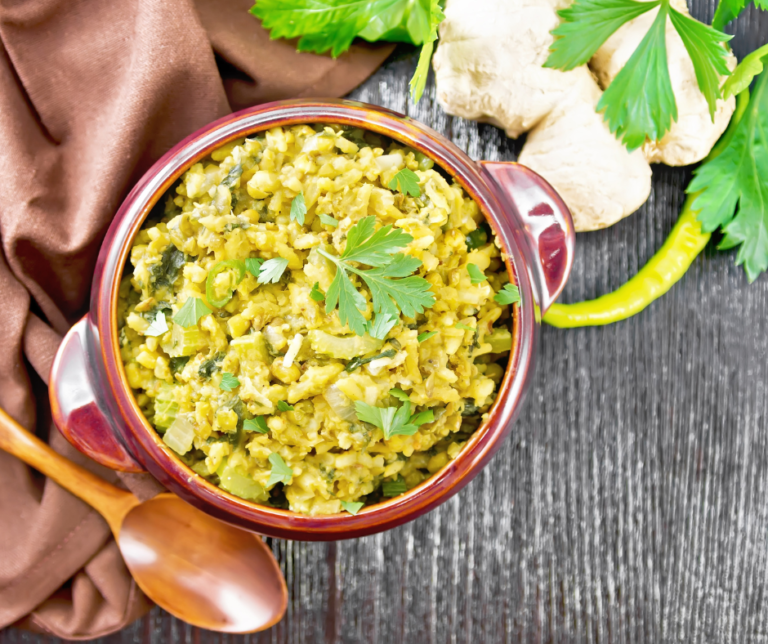

According to Ayurveda, one of the keys to maintaining health is to practice ritucharya— aligning ourselves with the rhythms of nature and having seasonal routines. Adjusting our daily self-care rituals to seasonal changes not only helps us maintain balance but also serves to remind and connect us with the natural world of which we are a part.

I am always both fascinated and in awe of the depth of ancient knowledge of our ancestors and how richly rooted it still is in the culture of India. Life here really is a celebration and all the festivals and rituals are reflective of and in precise alignment and in honour of these changes in nature on all levels – physical, energetic, spiritual, while taking account of mind, body and soul. We have just passed the new moon in March and the festival of Shivaratri honouring and harnessing the special energies available at this time. We are now leading up to the full moon which marks the beginning of spring – the equinox – and the well known “Holi” festival of colour – a celebration of life, renewal, fertility and abundance. Holi is a time of cleansing and purification – on a physical level – as the weather changes and typically damp weather, increase in pollen, mould and so on can cause illness and allergies. However, Holi also means “sacrifice” and is symbolic of burning all the impurities of the mind, such as ego, vanity and lust, through the fire of devotion and knowledge. It is a time to change the energy to the renewed spirit of spring, fertility and abundance and ignite cosmic love, mercy, generosity, selflessness, truthfulness and purity through the fire and energy (tapasya) of Yogic & spiritual practice. This is the real spirit of Holi – a literal “spring clean” on all levels.

Spring is a time of fertility, abundance and all around nature is busy preparing for a birthing process, of animals, plants and flowers. The seeds planted last year are about to emerge from their gestation phase and burst forth in abundance. The long awaited return of the light and energy of the sun.
Indeed the first signs of this life force energy springing forth are the first flowers, such as snow drops, then crocuses, tulips, hyacinth and daffodils coming through and the slight notice in the sunlight and longer days from as early as February.
Living in the UK I remember the feeling as the tight grip of winter finally feels as though its loosening slightly and the sense of relief and hope this brings. The joy at the first buds and flowers coming through – their array of colour and fragrance.
Spring is a time of transition and change, a period for clearing out the old and welcoming the new. It’s an opportunity for spring cleaning, reflecting on what to let go of, and making space for the new, forward movement in all aspects of life—physical, mental, and spiritual.

What seeds of intention will you sow for the coming weeks and months? – The energy powerfully supports us with this at this time – so it is worth spending time to think, contemplate, meditate, journal and plan.

The new season of Spring brings a new spring in our step and is characterized by Kapha dosha related to the elements earth and water the qualities of which are typically heavy, cool, soft, dense, stable, solid, and cloudy.* The lethargy and hibernation of winter is starting to leave us and in this season, we crave and need time in nature, fresh fruits and more activity.
*= (note: that the dosha and elements at play greatly depends on where you live and the climate you are experiencing at the time – this could be variable depending upon where you are. I am referring here to what is typical in the northern hemisphere at this time of year.)
To adjust for the season, consider the following practices:
Wake with the sunrise. One of the best practices to minimize the heavy quality of kapha in the mind and body is to wake with the sun (around 5:30 /6am this time of year – depending on where you live). Dawn is ruled by vata and is light, clear, and subtle – so get going with this energy to have increased vitality throughout the day.
Get moving. When kapha is dominant in the day, the muscles are strongest between 6:00 and 10:00 am. Get outside for a brisk walk or do some vigorous yoga asana practice, such as surya namaskar (sun salutations) to help melt away excess kapha. Kapalabhati and Bhastrika pranayama are also a great way to increase heat, invigorate and stoke the fires of digestion.
Eat lighter foods. In the winter months, we naturally gravitate toward heavier, sweet, sour, and salty foods to mitigate the dry, light qualities of the cold season. This can cause kapha accumulation in the physical body. To lighten up, try foods that are pungent, bitter and astringent, including kale, collards, dandelion, spinach, and mustard greens; strawberries, cherries, and blueberries; fresh green peas; and barley, quinoa, and millet. Switch to organic brown rice (if you haven’t already) – a much healthier option to white rice and helps improve digestion too.
A Time for Cleansing
In Ayurvedic tradition, a cleansing of the body and mind should take place at the beginning of each season. During this transitional phase both physical elements and energies are changing. During an equinox our body naturally detoxifies more, therefore we can prepare for this and support our bodies in cleansing and ensuring the paths of elimination are clear. It is time for our bodies to process the toxicity in readiness for the peak of Spring when our liver and gallbladder (our detoxing organs) are most active.

Some suggestions for seasonal cleansing for mind, body & soul are:-
Spring clean the house and the kitchen – clear out the old and that which you no longer use. The physical state of your house can hugely affect the energy – notice how much lighter and better you feel after having a good clear out and deep clean.
Clean your mind (start journaling, meditation, pranayama, mindfulness practices, movement practices such as yoga, tai chi and dance).
Take a look at your routines for work, and life in general. Where can you make adjustments for the better? Where do you need to shift your focus? Become more organised? Make a list and commit to start one thing new from today!
Can you become more disciplined with social media / electronic devices? Set specific time aside each day to respond to messages, attend to online work and stick to it without becoming distracted.
Extend your decluttering efforts to your digital life. Sort through emails, delete unnecessary files, unsubscribe from irrelevant notifications, and streamline your social media presence.
Look at the beauty products you use and routine you follow – can you switch to more natural healthier alternatives? In Ayurveda we say that you should not put anything onto your skin that you are not able to eat – that it should be fresh, natural and pure. The skin is the largest organ, it breathes and absorbs whatever is put onto it, which in turn goes into the blood stream – so it is equally important we are “feeding” our skin with nourishing, healthy, chemical free products.
If you suffer with allergies use a “jal neti” – water pot to irrigate the sinus cavities and clear out the nasal passages. Use one quarter teaspoon of Himalayan (or natural) salt with half a litre warm purified water, and use half a pot for each nostril. Ensure the salt is fully dissolved in the water first. Always end your jal neti routine by ensuring all water has been fully flushed out (practicing kapalabhati following this can help) and massage sesame oil or nasya oil into each nostril, once dry. Note – that it is important to ensure the nasal passages are completely dry after the practice to prevent infection.
Like any other yogic practice, learn it from an expert practitioner. For further advice on this feel free to contact me.
Jal Neti goes much beyond nasal cleansing and helps in aligning your body, mind and soul.
(Do not use this method if you have an active sinus infection; Note that this practice is for prevention, rather than treatment. And therefore is recommended as part of a regular yogic cleansing practice).

Detox drink: Add lemon, ginger, cinnamon, turmeric and black pepper to the diet, as they stimulate and detox. Make a cleansing tea with these ingredients each morning and start the day with this. Bring to the boil and simmer on a low heat for a few minutes, allow to seep for a while before straining and serve. You can add raw honey once its cooled a little or jaggery powder to sweeten.
Drink warm (not cold) water throughout the day.
As always, eat seasonally and make the most of the fruits and vegetables coming in season now. Eat warm freshly cooked (not over cooked) foods – vegetable soups and stews are perfect, with millets, quinoa and barley. Salads can also be incorporated into the diet from spring.
In season at the moment in the UK/ Europe are vegetables such as broccoli, kale, cabbage, leeks, cauliflower, parsnips, spinach, swede, sweet potato and apples.
In northern India, vegetables in season right now include: apple gourd, bitter gourd, bottle gourd, cauliflower, cabbage, cucumber, French beans, okra, sponge gourd, radish, watermelon and spinach.
Bottle gourd juice is an amazing detox, cleansing drink. This vegetable is in season now in India and is rich in vitamin C, K, calcium, and zinc. The cleansing properties of this vegetable are especially effective and known for cleansing the colon, improving gut health, promoting healthy skin and overall wellness. It is important that the juice is taken first thing in the morning on an empty stomach and at least an hour before eating for this to be most effective.
Ayurvedic Kitchari

Try incorporating kichari into your regular meals or consider an Ayurvedic kitchari, gentle detoxing diet!
Kichari is often recommended in Ayurveda as a gentle cleansing ritual (where one eats nothing but this simple porridge for a few days – enabling the digestive system to rest and reset) or as a preparation part of more intense cleansing and rebalancing protocols.
Kitchari is also a simple and easy any time meal that you know will be nourishing and beneficial to your body. Mung beans or lentils contain all the amino acids (building blocks of proteins) we need for optimum health and wellbeing. While brown rice is great for healthy digestion and is a great source of complex carbohydrates, which means it takes longer for the body to break down and absorb, resulting in a lower glycemic index. The spices support digestion, reduce inflammation while the ghee, known for its rejuvenating properties is a nutritional powerhouse, loaded with essential fat-soluble vitamins D, K, E and A, will also help to lubricate the system and support digestive health. Combined and cooked together in this way makes it both easily digested and assimilated into the body.
Ayurvedic Kitchari Recipe
Ingredients:-
- 1/2 cup organic brown rice
- 1/2 cup organic split moong dal (mung beans)
- 4 Cups of water
- Pinch of Salt
- Pinch cumin seeds
- Fresh or ground ginger (about half teaspoon ground or full teaspoon fresh)
- 2 Tsp. Turmeric powder
- Salt
- Pepper
- Ghee or vegan alternative (vegan butter, coconut oil, olive oil or avocado oil)
- Garnish (optional) – extra ghee or oil, black pepper, freshly chopped coriander
Method:-
- Soak rice and mung beans for at least 30 mins. Drain and rinse until water runs clear.
- Warm oil and spices: Next, add oil to a medium pot on medium-low heat. Once the oil starts to warm up, carefully add the cumin seeds and cook until the seeds start to brown and become fragrant – this takes about 1 minute. Add the ginger and ground turmeric, stir for about 1 min – until heated, careful not to burn.
- Add remaining ingredients: Add the rice and moong dal mixture, stir. Pour in the water, season with salt and pepper, and stir.
- Simmer: increase the heat to medium-high to bring the mixture to a slight boil. immediately turn the heat down medium-low to a gentle simmer. Cook uncovered for 30 minutes, stirring occasionally until you get a porridge-like consistency. it should be soft and creamy.
- Season: Adjust the seasoning, if needed, and taste to make sure the mixture is cooked through. if not, cook for longer. Feel free to add a few tablespoons of water if it starts to get very thick.
- Garnish and serve: The kitchari is ready to be enjoyed. Garnish by adding a sprinkle of freshly chopped coriander, ground black pepper and teaspoon of nourishing ghee (or vegan alternative such as olive oil) to taste. Serve immediately or cool down to store for later.
(Optional – add a little chopped or grated zucchini, bottle gourd, yellow squash, green beans, fresh peas, spinach or kale into mixture while cooking.)
Avoid garlic, chili and onion as these will increase rajas and tamas and aggravate pitta dosha. (To find out more about the “gunas” – tamas, rajas & sattva and the doshas – click the button below:-
Kitchari provides many benefits, it is nourishing, healing to the digestive system, cleansing, it acts as a gentle detox, and is also tri-doshic – meaning that it is balancing to all three doshas- Vata, Pitta, and Kapha.
This recipe (along with several others) can be found in my EBook – Ayurveda & Yogic Lifestyle – Principles for Living a Healthy Life. Send me a message if you would like a copy!

Other Supplements to consider

Chyawanprash – take 1 tablespoon twice a day (morning and evening) for detox support and immunity boosting.
Consider taking a Triphala supplement – an ayurvedic medicinal blend of three fruits – which has numerous benefits and is especially well known to improve digestion, ease constipation and promote regularity. It is suggested to take Triphala between meals on an empty stomach for maximum absorption. Typically, recommended doses ranges from 500 mg to one gram per day, though larger amounts can be used to treat constipation. It is advised to start with less and slowly build up as necessary. Powdered versions can be mixed with warm water and honey and taken before meals. If you are unsure if this is right for you or have any underlying health concerns always check for contraindications.
Consider a dandelion or milk thistle supplement to support the liver and gallbladder at this time of year. Both are available in tincture and tablet form.
Always check for contraindications before taking a new supplement.
Avoid alcohol, sugar, cold drinks, all processed foods, ice cream and dairy products during this time.
Focus on easy to digest foods rather than anything heavy to aid in the detoxification and cleansing process.
Step into Springtime with a spring in your step and renewed zest for life!
To book a free consultation to find out how we could work together on your wellness journey do not hesitate to contact me – Click the button below.

Disclaimer:- Please note that the information contained within this article is based on my own experience and principles of healthy living from my knowledge of Ayurveda. The information and recommendations mentioned herein are not intended as a substitute for the medical advice of a qualified healthcare physician, psychiatrist or Ayurvedic doctor. If in doubt, or if you may require diagnosis or medical attention, consult your healthcare provider before implementing or adopting any significant diet or lifestyle changes and taking any herbal supplements.
